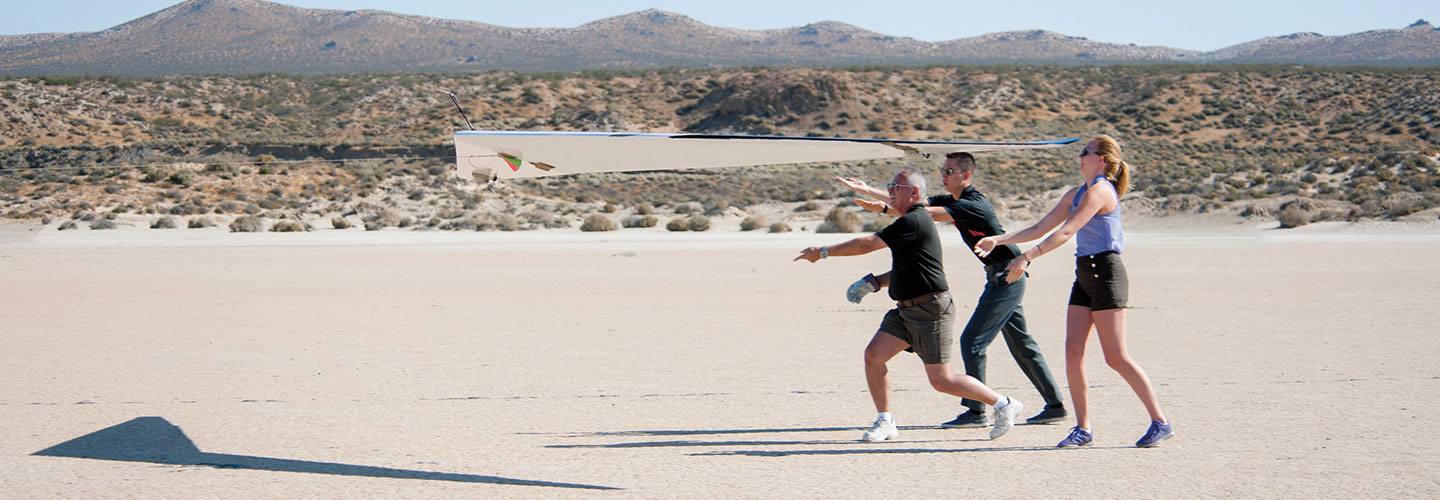Robert “Red” Jensen uses math, science, and electronic engineering every day. But when he’s looking for students to join NASA's Subscale Flight Research Lab, he doesn't look at their grades first. Instead, he checks if potential interns are into model airplanes.
“There’s not a course that prepares you for the types of things we do,” says Jensen. He’s the operations engineer and chief pilot for NASA's unmanned subscale aircraft systems in Edwards, California. “I was one of those kids who hated math until I had something to apply it to—and for me that was airplanes.”
Robert “Red” Jensen uses math, science, and electronic engineering every day. When he’s looking for students to join his lab, he doesn't look at their grades. Instead, he checks if they like model airplanes.
“There’s not a course that prepares you for the types of things we do,” says Jensen. He’s an engineer and chief pilot for NASA's Subscale Flight Research Lab in Edwards, California. At his lab, they test small models of every NASA plane and rocket design. “I was one of those kids who hated math until I had something to apply it to. For me that was airplanes.”

